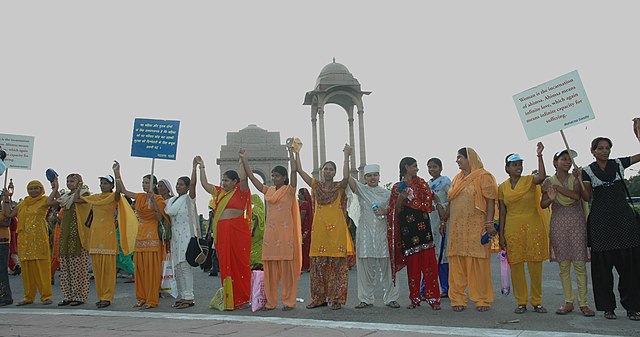Violence against women in India
Violence against women in India refers to physical or sexual violence committed against a woman, typically by a man. Common forms of violence against women in India include acts such as domestic abuse, sexual assault, and murder. There are several forms of violence against women, murder, female infanticide, sexual crimes, acid throwing, perpetuation.
A formation of human chain at India Gate by the women from different walks of life at the launch of a National Campaign on prevention of violence against women, in New Delhi on October 2, 2009
Rising son in law in Bengal, painting by Gaganendranath Tagore - Indian Museum, Kolkata
A mother who travelled from her village in Nepal to Mumbai, India, with the aspiration of locating and rescuing her teenage daughter who had been trafficked into an Indian brothel.
Domestic violence in India
Domestic violence in India includes any form of violence suffered by a person from a biological relative but typically is the violence suffered by a woman by male members of her family or relatives. Although Men also suffer Domestic violence, the law under IPC 498A specifically protects only women. Specifically only a woman can file a case of domestic violence. According to a National Family and Health Survey in 2005, total lifetime prevalence of domestic violence was 33.5% and 8.5% for sexual violence among women aged 15–49. A 2014 study in The Lancet reports that although the reported sexual violence rate in India is among the lowest in the world, the large population of India means that the violence affects 27.5 million women over their lifetimes. However, an opinion survey among experts carried out by the Thomson Reuters Foundation ranked India as the most dangerous country in the world for women.

A street theatre performance on domestic violence at the Bridge Market plaza in Chandigarh.




